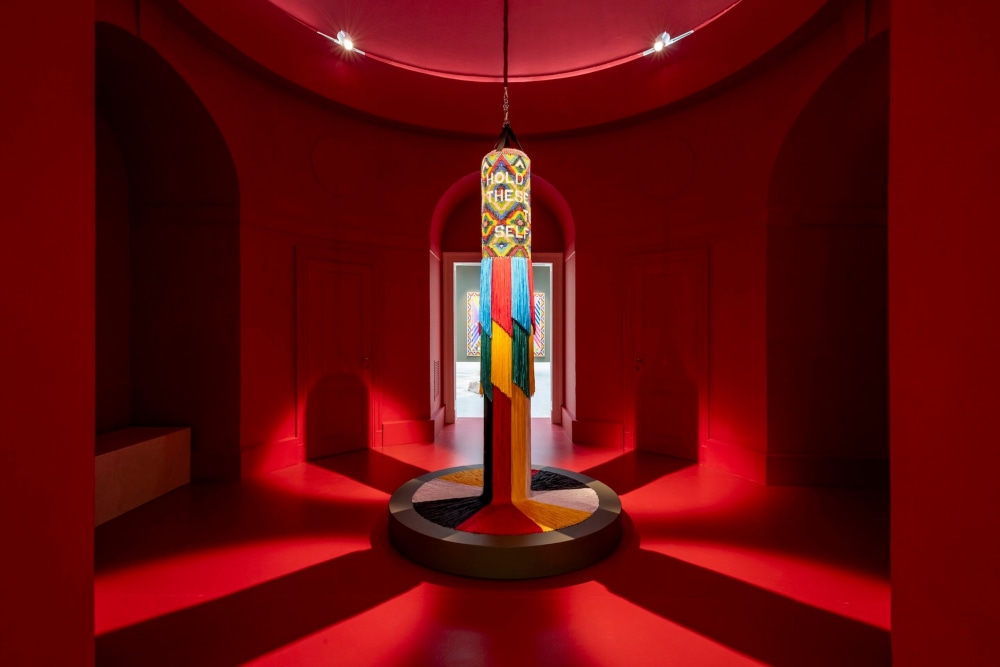

By Jameson Johnson and Casey Lesser
Foreigners Everywhere, the theme of Adriano Pedrosa’s 60th Venice Biennale, is palpable across the city, as artists and curators mount dynamic exhibitions that contend with what it means to be an outsider. As is typically the case, the curator’s conceptual framework for the International Art Exhibition has also surfaced prominently in national pavilions, from the typically mighty blockbusters in the Giardini to the less expected (but equally compelling) presentations across the neighborhoods of Giudecca, Cannaregio, Castello and Dorsoduro.
In the midst of multiple wars and political and social turmoil at a global scale, the best national pavilions we saw in Venice sought to build empathy. Artists and curators are foregrounding Indigenous narratives and heritage; painting notions of belonging; documenting forgotten histories while imagining new futures; and urging us to engage with peoples and spaces that are often dismissed.
The Palladian exterior of the U.S. pavilion has been concealed with vibrant swaths of color and geometric text boasting the title of Indigenous artist Jeffrey Gibson’s presentation, the space in which to place me. The title references a poem by Oglala Lakota Nation writer Layli Long Soldier that pushes at the limitations and colonial forces that Indigenous communities have been subject to. Instead, Gibson proposes a bold reclamation and celebration of Native and queer narratives by remixing text, patterns, colors, and histories through his signature technicolor style.
Gibson is a member of the Mississippi Band of Choctaw Indians and of Cherokee descent, and the first Native American artist to have a solo presentation at the U.S. pavilion. His identity is informed by his international childhood and coming of age as a queer man surrounded by diverse cultural communities. His work often references drag, nightlife, and dancehall, but for the Biennale presentation, these parts of his story are subtly woven in, instead offering the platform to an exploration of an Indigenous visual vernacular.
Gibson followed Simone Leigh’s dramatic move to cover the U.S. pavilion in raffia in 2022 with a total transformation of the courtyard to make it a site for gathering and performances. A stack of massive classical-style pedestals and podiums have been painted a monochromatic red, arranged in a circle, and set right in the center of the rectangular courtyard, where visitors are invited to climb atop.
Inside the galleries, a series of primarily new paintings and sculptures begin to reveal Gibson’s constellation of references that range from song lyrics by Nina Simone and Tracy Chapman to excerpts from the United States’s founding documents. At the center of the rotunda, an intricately beaded punching bag is decorated with a line from the U.S. Declaration of Independence: “WE HOLD THESE TRUTHS TO BE SELF EVIDENT.” Each piece is rife with layers of references, but they’re connected by a thread that pulls at what it means to be “free.”
Photo by Timothy Schenck